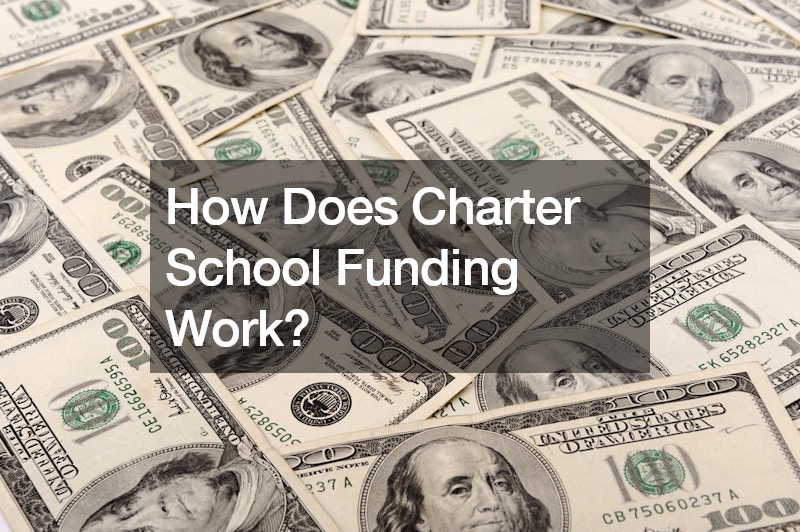
Charter schools have become increasingly prevalent in the education landscape, offering alternatives to traditional public schools. One of the critical aspects that enable the functioning and growth of charter schools is funding. Understanding how charter school funding works is essential for educators, policymakers, and parents alike. In this article, we’ll delve into the intricacies of charter school financing, exploring the challenges, options, and solutions available.
What is a Charter School?
A charter school is a publicly funded institution that operates independently of traditional public school districts. What distinguishes charter schools from conventional public schools is their autonomy in decision-making regarding curriculum, staffing, and budgeting.
Charter schools are granted a charter—a contract—by either a governmental or non-profit entity, outlining the school’s mission, educational goals, methods of assessment, and accountability measures. This charter typically lasts for a specified period, usually between three to five years, after which the school’s performance is evaluated for renewal.
Charter schools have the freedom to experiment with innovative teaching methods, curriculum designs, and educational philosophies tailored to meet the needs of diverse student populations. They often cater to specific educational philosophies or focus areas, such as STEM (Science, Technology, Engineering, and Mathematics), arts integration, or language immersion programs. While charter schools are publicly funded, they may also receive additional funding through grants, donations, or partnerships with private organizations.
Charter schools are accountable for their academic performance and adherence to the terms outlined in their charter. If a charter school fails to meet specified academic standards or violates its charter agreement, it may face consequences such as closure or non-renewal of its charter. Despite their autonomy, charter schools are still required to comply with state and federal regulations regarding educational standards, student assessments, and civil rights protections.
Challenges in Charter School Financing
At every stage of a charter school’s growth, financing poses significant challenges. Whether it’s a startup school in need of its first home or a mature school seeking to expand, securing adequate funding for facilities remains a constant hurdle. Startup schools often struggle to find suitable premises, while growing schools may face the need to refinance or restructure their leases. Mature schools, having established sustainable growth, typically seek better terms or aim to own their buildings outright. Additionally, when a school aims to expand beyond its initial location, leaders must embark on a search for a new building and a financing solution for that expansion.
Options for Charter School Financing
Charter school leaders have several options for financing their school buildings, each with its own set of advantages and challenges. The choice ultimately boils down to three variables: the stability of the financing arrangement, its flexibility, and its cost-effectiveness.
One option for charter school financing is leaseback financing, which allows schools to gain control of their buildings through a lease arrangement. This option provides stability and flexibility, enabling schools to focus on their core mission of education while ensuring they have suitable facilities. Leaseback financing has helped numerous schools gain control of their buildings, providing a viable solution for charter school financing.
Another innovative solution is the no-cost bond alternative, which offers a unique approach to charter school financing. This option eliminates upfront costs typically associated with bonds, providing schools with an affordable way to finance their facilities. While this alternative may have certain limitations, its cost-effectiveness makes it an attractive option for many charter schools.
The Role of Charter School Capital
In navigating the complex landscape of charter school financing, organizations like Charter School Capital play a crucial role. With over a dozen years of experience, Charter School Capital offers expertise and guidance to charter schools seeking financing solutions. Their advisors are intimately familiar with the various options available, understanding their virtues and shortcomings.
Through leaseback financing solutions, Charter School Capital has helped more than 50 schools gain control of their buildings, enabling them to focus on providing quality education to their students. Additionally, their no-cost bond alternative offers a unique opportunity for schools to finance their facilities without incurring significant upfront costs. By providing innovative facilities financing services, Charter School Capital empowers charter schools to overcome the challenges of funding their facilities and focus on their mission of educating students.
Conclusion
Charter school funding is a complex and critical aspect of ensuring the success and sustainability of charter schools. From securing initial premises to financing expansions, charter schools face numerous challenges in funding their facilities. However, with innovative solutions such as leaseback financing and no-cost bond alternatives, charter schools can overcome these challenges and focus on their primary goal of providing quality education.
Organizations like Charter School Capital play a vital role in supporting charter schools with their expertise and guidance in navigating the intricacies of facilities financing. By understanding the options available and leveraging the resources provided by such organizations, charter schools can secure the funding they need to thrive and fulfill their mission of educating the next generation.
.




